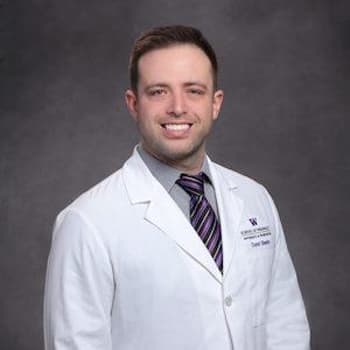Opioids like oxymorphone can cause a life-threatening overdose if too large of a dose is taken. Knowing what to do if you suspect an overdose can help avoid a fatal outcome.
An overdose is a medical emergency. If you suspect someone is experiencing an overdose, take the following steps:
- Check for overdose symptoms, including trouble breathing, trouble speaking, blue skin and unconsciousness.
- Call for help, including 911 and poison control (1-800-222-1222).
- Administernaloxoneif it is available in your state and you have access.
- Don’t leave the person by themselves.
- Don’t try to “wait out” the overdose.
- Don’t give the person other drugs or caffeine to “wake” them.
Can You Overdose on Oxymorphone?
Oxymorphone, often known by the brand nameOpana, is a relatively strong opioid medication typically prescribed to treat chronic or moderate to severe pain. Taking too much of an opioid like oxymorphone can easily lead to a life-threatening overdose.
People can also develop atolerance to opioidslike oxymorphone rather quickly. This may cause them to take larger doses to feel the same effects, which can cause an overdose.
Signs and Symptoms of an Oxymorphone Overdose
The primary symptom of an oxymorphone overdose is slow, shallow breathing. The overdose victim’s breathing may seem labored, or it may be stopped altogether. Other signs and symptoms of an oxymorphone overdose caninclude:
- Unresponsiveness
- Nodding off or losing consciousness
- Pinpoint pupils
- Slow pulse
- Irregular breathing
- Lips or fingernails that appear purple
- Gurgling or snoring sounds
- Being awake but unable to talk
- Limpness in the body
- Vomiting
Drug overdose can be fatal. If you suspect someone is experiencing an overdose, call 911 immediately.Do NOT be afraid to seek help. If you do not have access to a phone, contactWeb Poison Control Servicesfor online assistance.
Treatment Can Be Life Changing. Reach out today.
Whether you are struggling with addiction, mental health or both, our expert team is here to guide you every step of the way. Don’t wait— reach out today to take the first step toward taking control of your life.
Administering Narcan During an Oxymorphone Overdose
A reversal drug callednaloxone(Narcan) can be administered if someone overdoses on an opioid like oxymorphone, but it has to be done right away. Even if someone is given naloxone, they still need emergency medical care to prevent or treat any complications or damage that may have occurred. Additionally, if an opioid has a long half-life, it can stay in the body longer than naloxone’s effects last. In this situation, a person may re-enter an overdose once the naloxone wears off.
If someone is overdosing on oxymorphone and they don’t receive the appropriate emergency care, they may suffer brain damage, go into a coma or die.
Common Overdose Risk Factors
Risk factors for an oxymorphone overdose include:
- Taking higher doses than prescribed
- Continuing to take it even when pain is no longer an issue
- Taking it more often than instructed
- Using oxymorphone without a prescription
- Combining oxymorphone with alcohol
- Using oxymorphone with other central nervous system depressants, such as benzodiazepines
- Using multiple opioids simultaneously
- Detoxing from opioids and then taking them again after detox (the person’s tolerance would likely be lower, which would make them more susceptible to an overdose)
- Injecting or snorting oxymorphone
Prevalence of Oxymorphone Overdose Deaths
The massive number of opioid overdoses is one of the biggest current public health and economic concerns in the United States. The rise of opioid overdose deaths started in the 1990s when pharmaceutical companies worked to sell new opioid products to doctors and the public. Now, opioids are widely available and often diverted from medical use.
Opioids like oxymorphone cause tens of thousands of overdoses each year, and many are fatal. In 2019, around50,000 people died from opioid overdoses— almost 137 Americans every day.
Suicidal Intentions
If you believe a person has overdosed intentionally in a suicide attempt, they will likely need additional support. After the person receives overdose treatment from emergency services, they should be referred to psychiatric care and support to help manage the underlying cause of the suicidal thoughts.
Relapse and Tolerance Considerations
After a person finishestreatment for an opioid use disorder, they are at a much greater risk of overdose. Going through treatment typically will “reset” a person’s tolerance to opioids. If a person begins using the same amount they did before, they are more likely to unintentionally overdose.
Tolerance to opioids develops quickly, but it can fade quickly as well. To prevent dangerous opioid relapses, it’s important to find atreatment centerthat provides ongoing care and support for lifelong recovery.
If you or someone you love is struggling with anopioid addiction, The Recovery Village can help.Contact ustoday to learn more about treatment programs that can guide you toward a healthier, opioid-free future.








